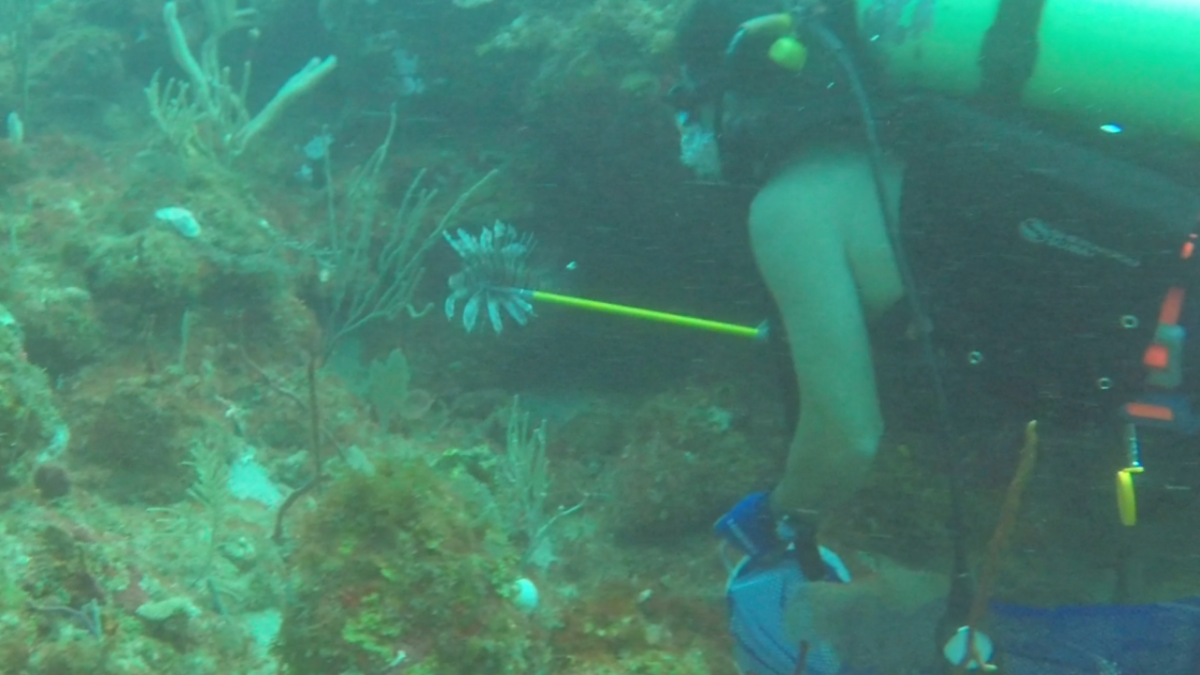Palmas del Mar resort community in Humacao, Puerto Rico is known for golf, tennis, pickelball, hiking, Palmas Farmers Market, and activities year round.
There are also incredible scuba dive sites right outside the Palmas del Mar community in Humacao on the east coast of Puerto Rico! The reef off the coast of Humacao is not part of Protected marine areas (MPA) or Nature Researve, so it is popular with commercial fishermen and scuba divers for lobster and lionfish hunting.
Palmas del Mar Dive Sites
- Cubera Reef at La Conga Dive Site – 80 foot bottom
- Hansi Hub – 50 foot depth and a lionfish favorite hangout with the occasional nurse shark
- Cayo Largo – reef wall at 60 feet surrounded by 140 foot drop
- Udûn (dark pit) – sandy bottom reef 70+ depth with great visability, teeming with lobster, lionfish, crab, and reef fish
Scuba diving from Palmas del Mar, Puerto Rico – visit multiple dive sites, lobster & Lionfish hunting, swim with sharks, and explore an amazing array of colorful reef fish!
Why do we Hunt Lionfish?
Lionfish are an invasive species in the Caribbean. Lionfish have very few natural predators in the Atlantic Ocean and Caribbean Sea due to their venomous spines and unfamiliarity to native species. However, some marine animals have been observed preying on lionfish or showing potential as predators to these beautiful brats of the ocean.
Lionfish are a delicious white fish! When prepared properly, by wearting prtotective gloves, the venomous fins are safely removed. The now fin-less lionfish is cut away from the bone, ready for cooking.
Lionfish Predators
- Groupers (e.g., Nassau grouper, Tiger grouper) – Some studies suggest that groupers can eat lionfish, though they do not appear to hunt them regularly.
- Moray eels – In some cases, moray eels have been seen eating lionfish, particularly when the lionfish are wounded or small.
- Snapper (e.g., mutton snapper, yellowtail snapper) – Some species of snapper have been observed preying on juvenile lionfish.
- Sharks – While rare, some sharks have been trained or encouraged to eat lionfish, but it is not their natural prey.
- Barracudas – There are occasional reports of barracudas attacking lionfish, but this is not common.
- Octopuses – Some divers have reported octopuses eating lionfish, likely because they are immune to the venomous spines.
- Large crabs and lobsters – Some crustaceans, particularly large lobsters, have been observed feeding on dead or wounded lionfish.
Lionfish Hunting Restrictions
There are no fishing restrictions for lionfish in the Caribbean. In fact, it is encouraged and there are no size limits, catch limits, or closed seasons for lionfish.
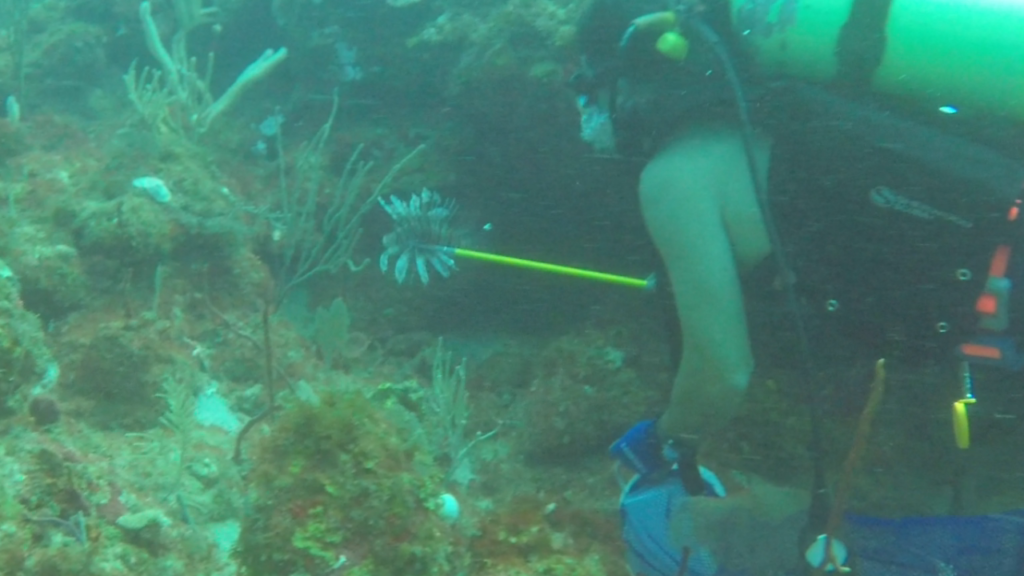
Lionfish Fishing Regulations and Encouragement in the Caribbean
- No bag limits or size limits – Divers and fishermen can catch as many lionfish as they want.
- Spearfishing encouraged – Many Caribbean nations allow and promote the use of spears or special pole spears (like the metal trident spear) for lionfish removal. Double check if you need a permit spearfishing in your area or if spearfishing while scuba diving is prohibited (very rare, but it happens).
- Protected marine areas (MPAs) – In some national parks and marine reserves, fishing (including for lionfish) may be restricted unless special permits are granted.
Ecological Impact of Lionsfish in Puerto Rico and the Caribbean
- Disrupting Local Ecosystems: Lionfish are voracious predators that consume a wide variety of native fish and crustaceans, including juveniles of commercially and ecologically important species like snapper, grouper, and parrotfish.
- Declining Native Fish Populations: Without natural predators in the Caribbean, lionfish populations grow unchecked, leading to the decline of native fish populations, which disrupts the food chain.
- Coral Reef Damage: By eating herbivorous fish such as parrotfish, which help control algae growth, lionfish indirectly contribute to coral reef degradation. Excessive algae growth can smother corals, reducing biodiversity.
Lobster Hunting
Recreational Fishers are required to have a recreational fishing license and an additional permit for lobster fishing.
Size and Bag Limits (full details on Caribbean Fishery Management Council site):
- Minimum Size Limit: The carapace length of harvested spiny lobsters must be at least 3.5 inches (8.9 cm).
- Recreational Bag Limit: Up to 3 spiny lobsters per person per day, with a maximum of 10 per vessel per day, whichever is less.
- Protection of Pregnant (Egg-Bearing) Female Lobsters – It is illegal to harvest, possess, or disturb egg-bearing (berried) female spiny lobsters. Pregnant lobsters must be immediately released, without harm, back to the water. It is easy to identify pregnant lobsters by looking for the fuzzy orange eggs on their “belly”.
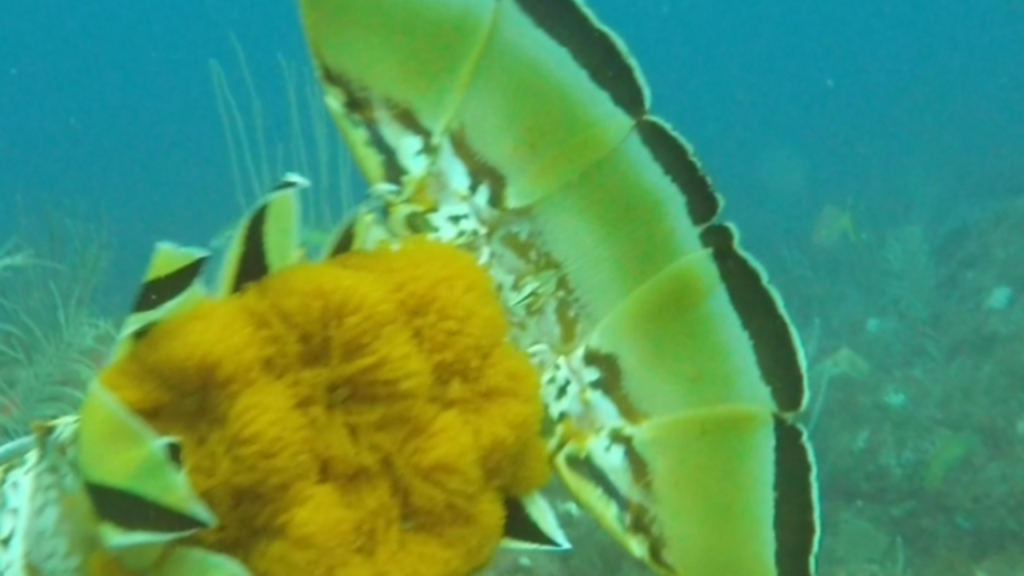
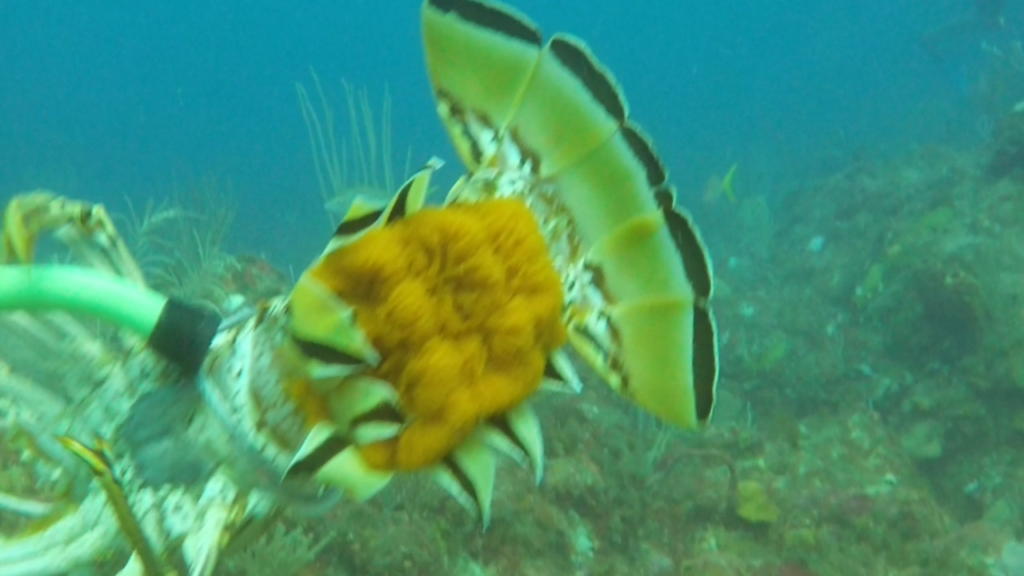
Diver Gear for lobster and lionfish hunting
Due to the venomuous spines on lionfish, protective gear is necessary for a safe and enjoyable hunt.
Protective Gloves for Lobster or Lionfish hunting
Lionfish spear The metal trident spear stabs the invasive lionfish and protects you from the venomous fins. Since lionfish do not have any natural preditors in the Caribbean, they allow you to get very close making the trident a deadly weapon at short range.
Lionfish containment bucket – hard sided tube with 1 way entrance for lionfish or lobster, protect your legs and torso from the venomous fins
Lobster noose aka Hawaiian Sling to gently sneak behind the lobster and close the lobster tail in a noose.
Lobster bag – protective bag for lobsters, use for lionfish at your own risk
Speargun – Another option for lionfish (and larger fish) is a speargun! Lightweight, but a bit heavier than the trident, the speargun allows you to shoot the lionfish at a greater distance. Also a great option for grouper and other medium sized reef fish.
Essential Diver Gear
If you are new to scuba diving, or just curious about my scuba gear, here is a breakdown of my essential scuba gear for diving.
Dive Mask – Cressi F1 dive mask or Cressi single lens dive mask & snorkel
Neoprene Mask Strap Cover – If you have long hair like me, a strap cover is essential to keep from pulling your hair out removing a wet mask.
BCD – Scubapro Hydros BCD
Regulator – Scubapro Regulator System
Fins – I prefer full pocket fins versus adjustable, but find the best fit and comfort for your swimming style
Equipment Clips Lanyard Clips with Quick Release Buckle or carabineer to secure your equipment while hunting
Noise Maker – All of my dive gear is padded so I need a seperate noise maker to signal my dive buddy underwater. Grabbing another diver’s leg is not the best way to get their attention, especially when hunting lionfish!
Dive Flashlight to spot your prey and visually signal to your dive buddies
Wetsuit – I prefer the 3mm short style wetsuit for scuba in the Caribbean, and full length in thicker neoprene for colder water dives.
Humacao Dive Shop
For tank inspections, scuba equipment repairs, and equipment rental, Humacao Dive Shop is the closest and best stocked dive shop! Owned and operated by Peter and his family.
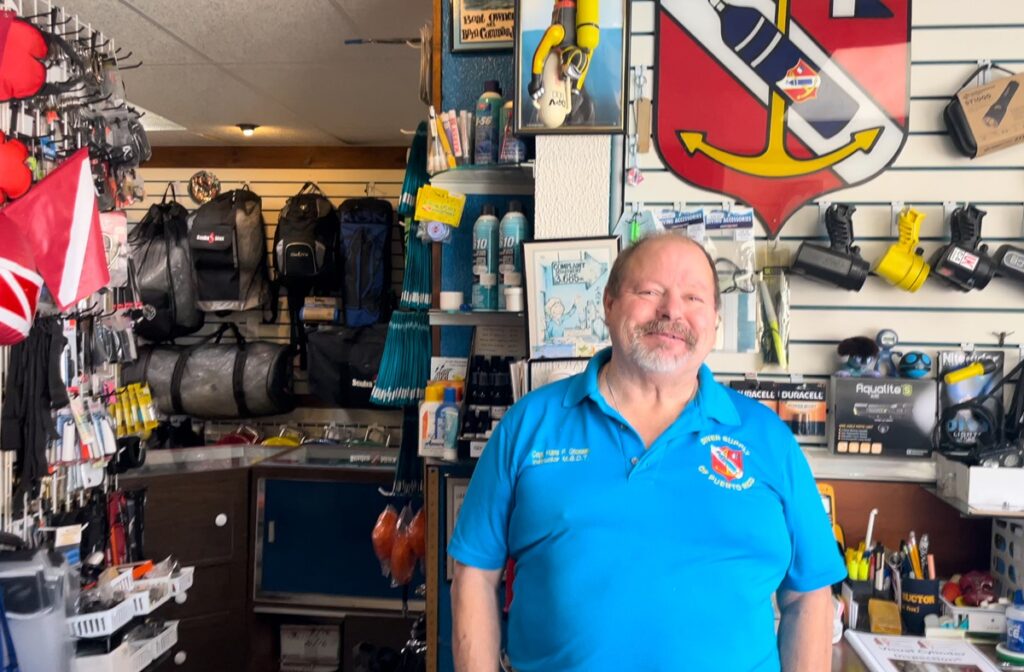
Diver Supply of Puerto Rico Humacao (787) 852-4530

